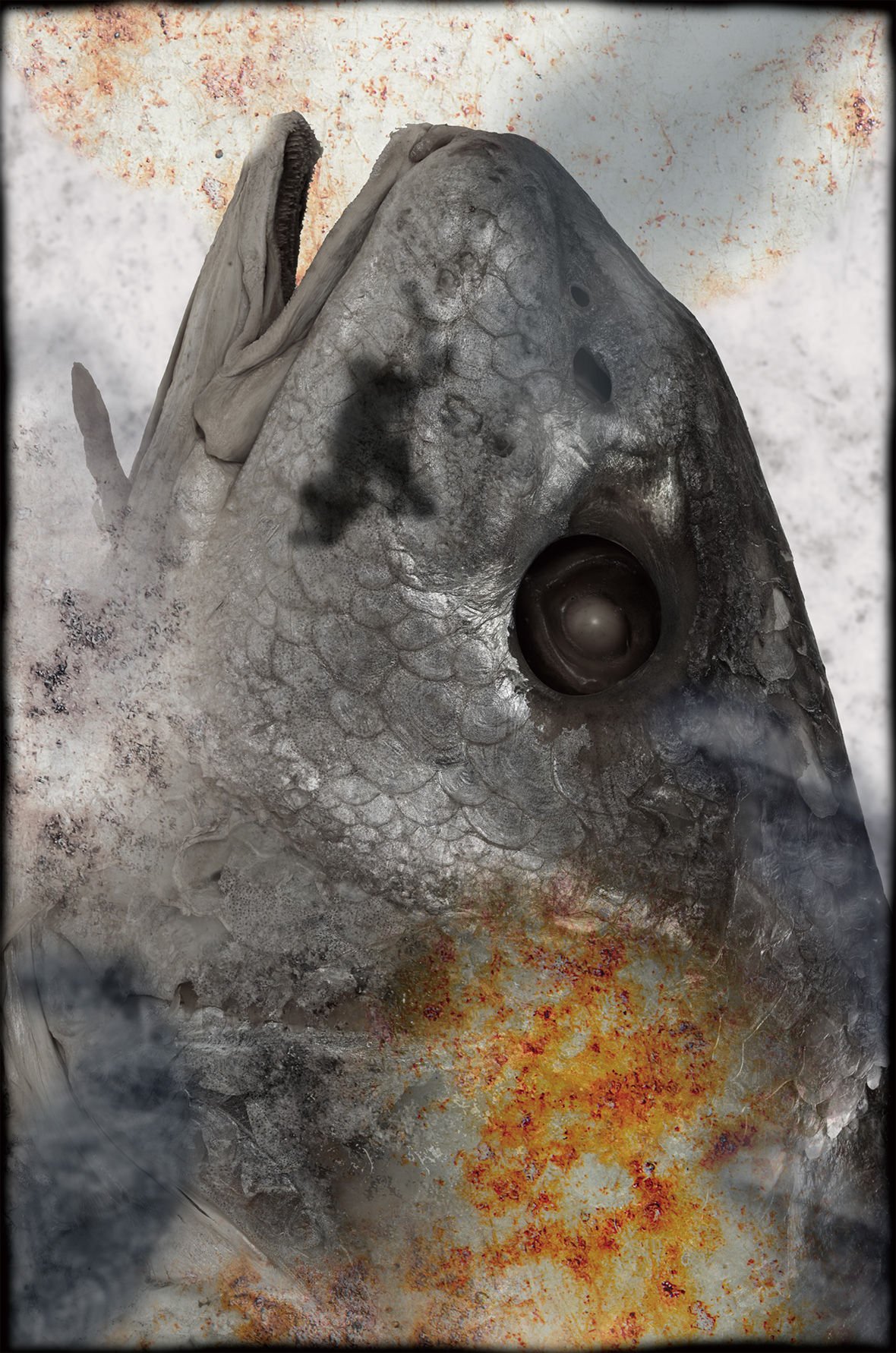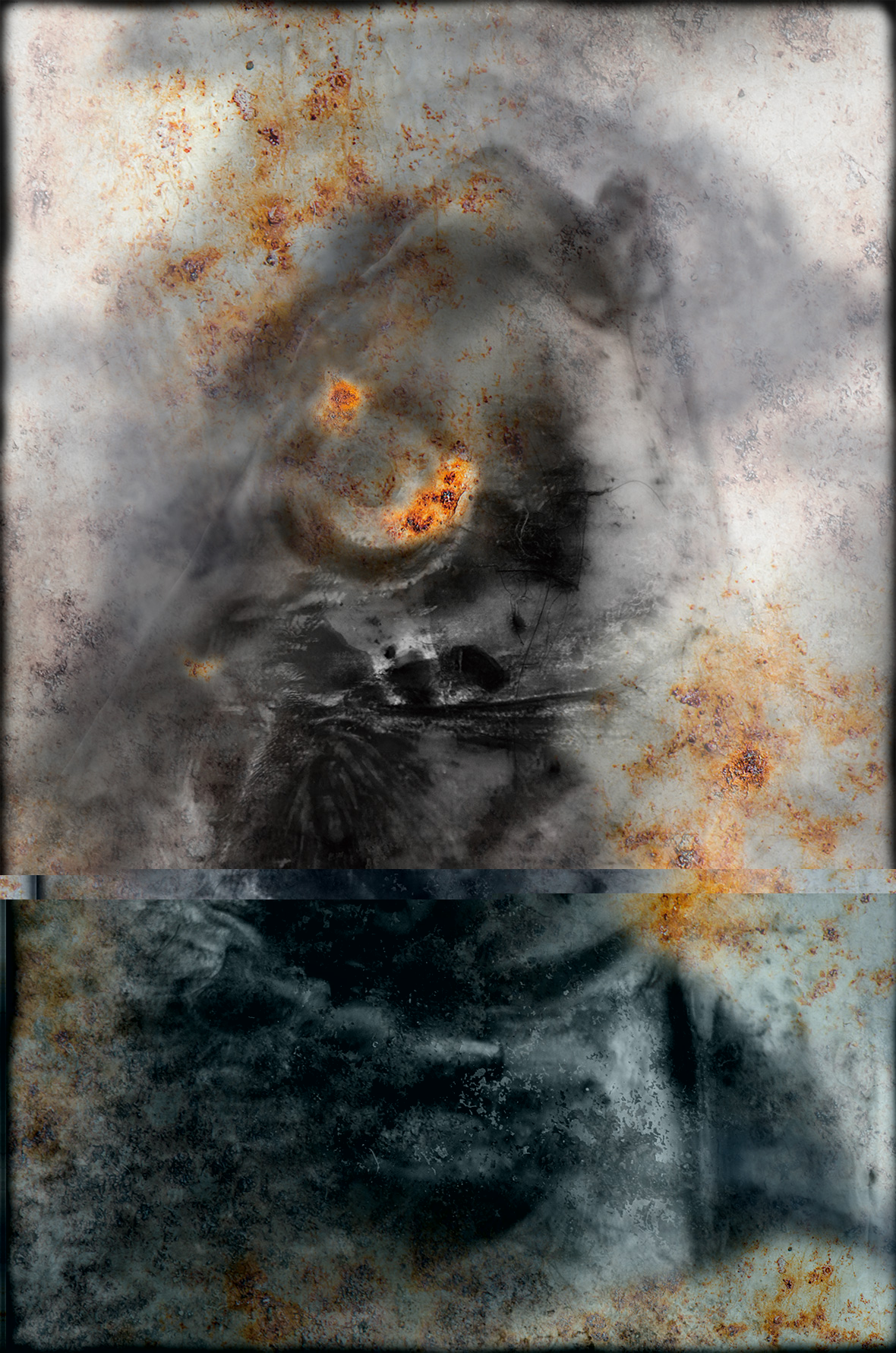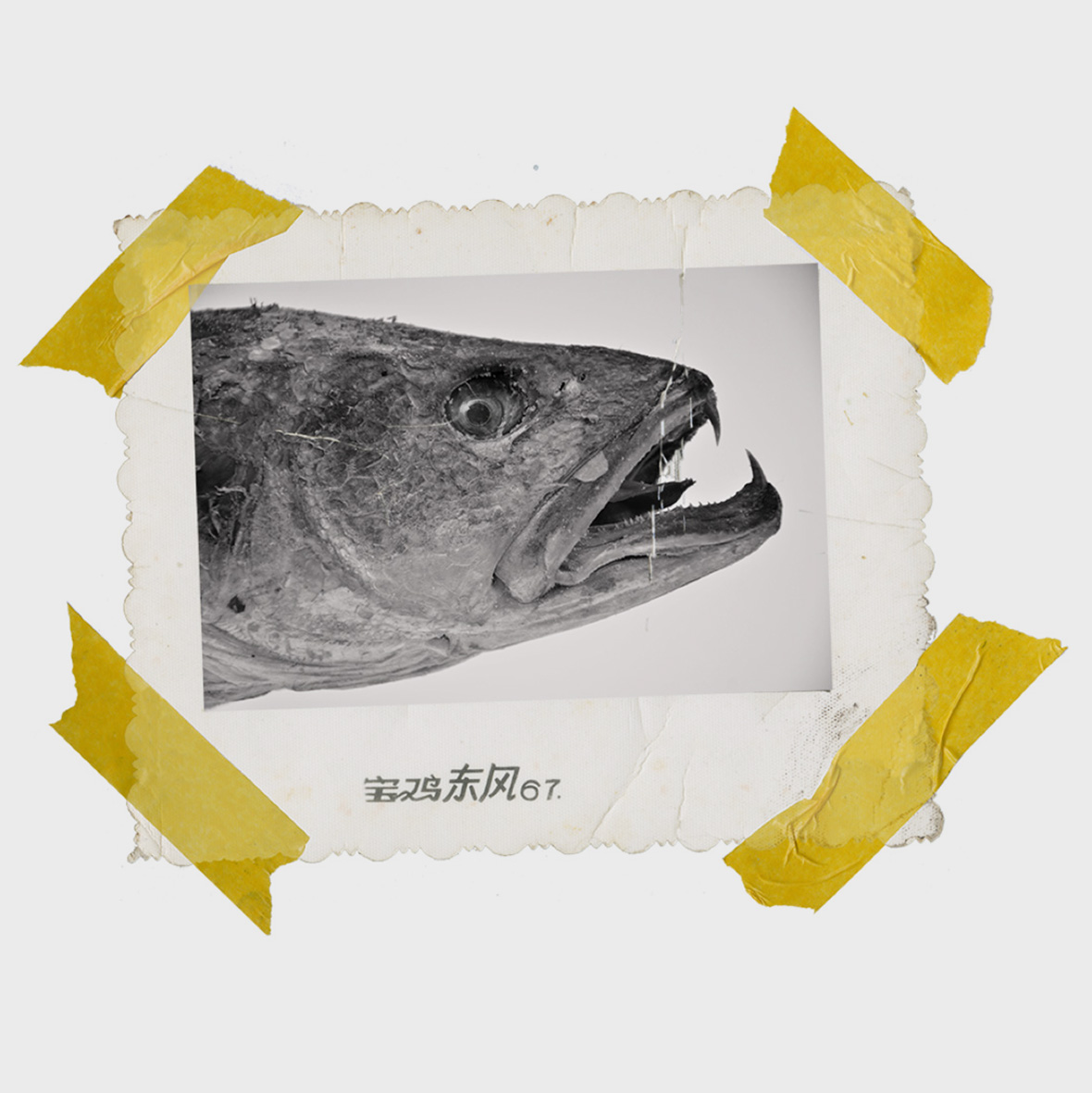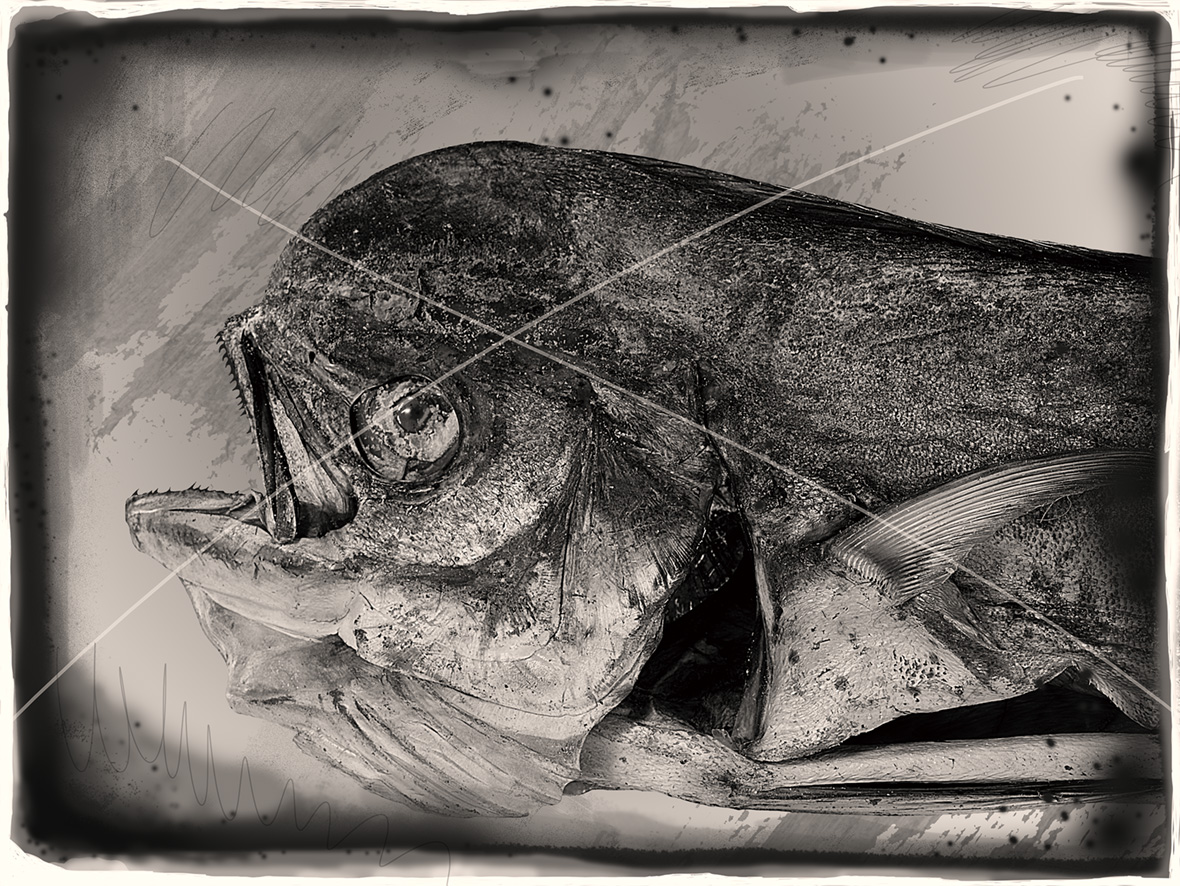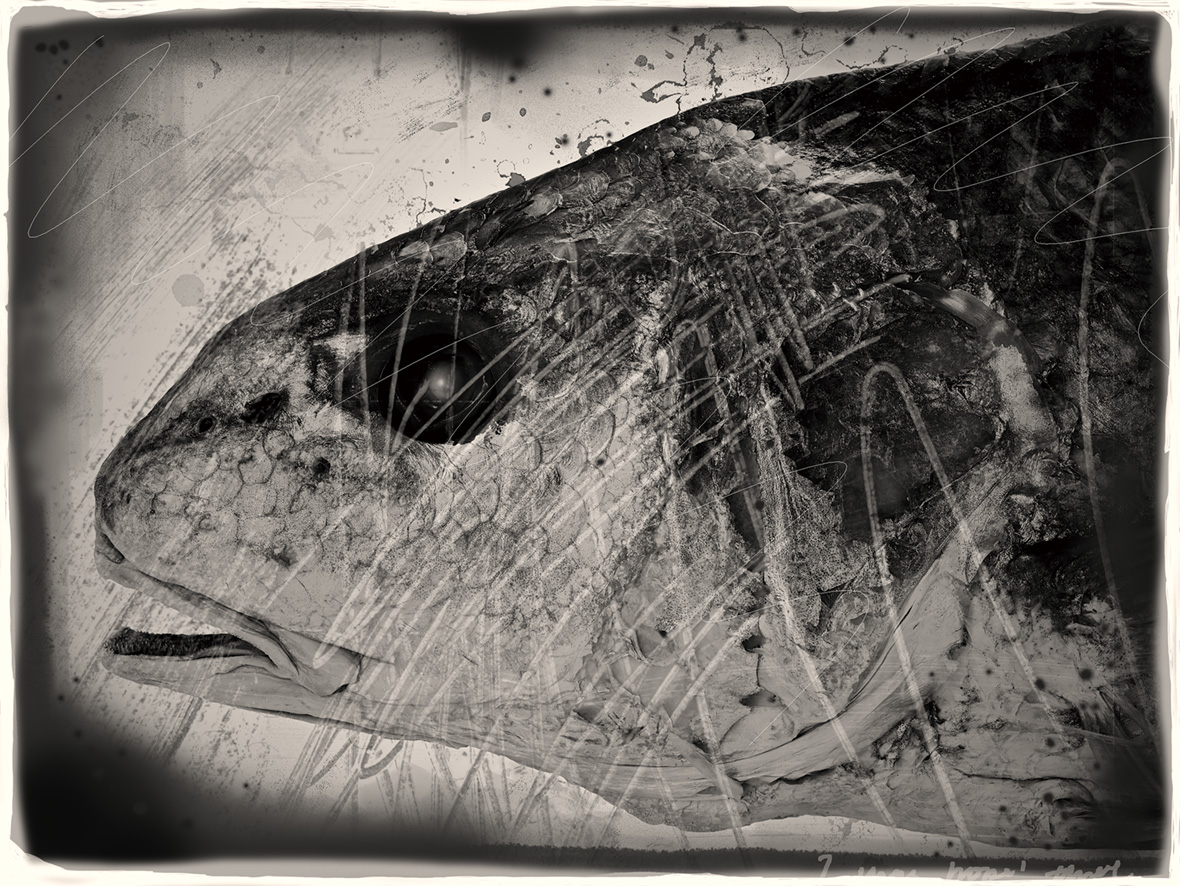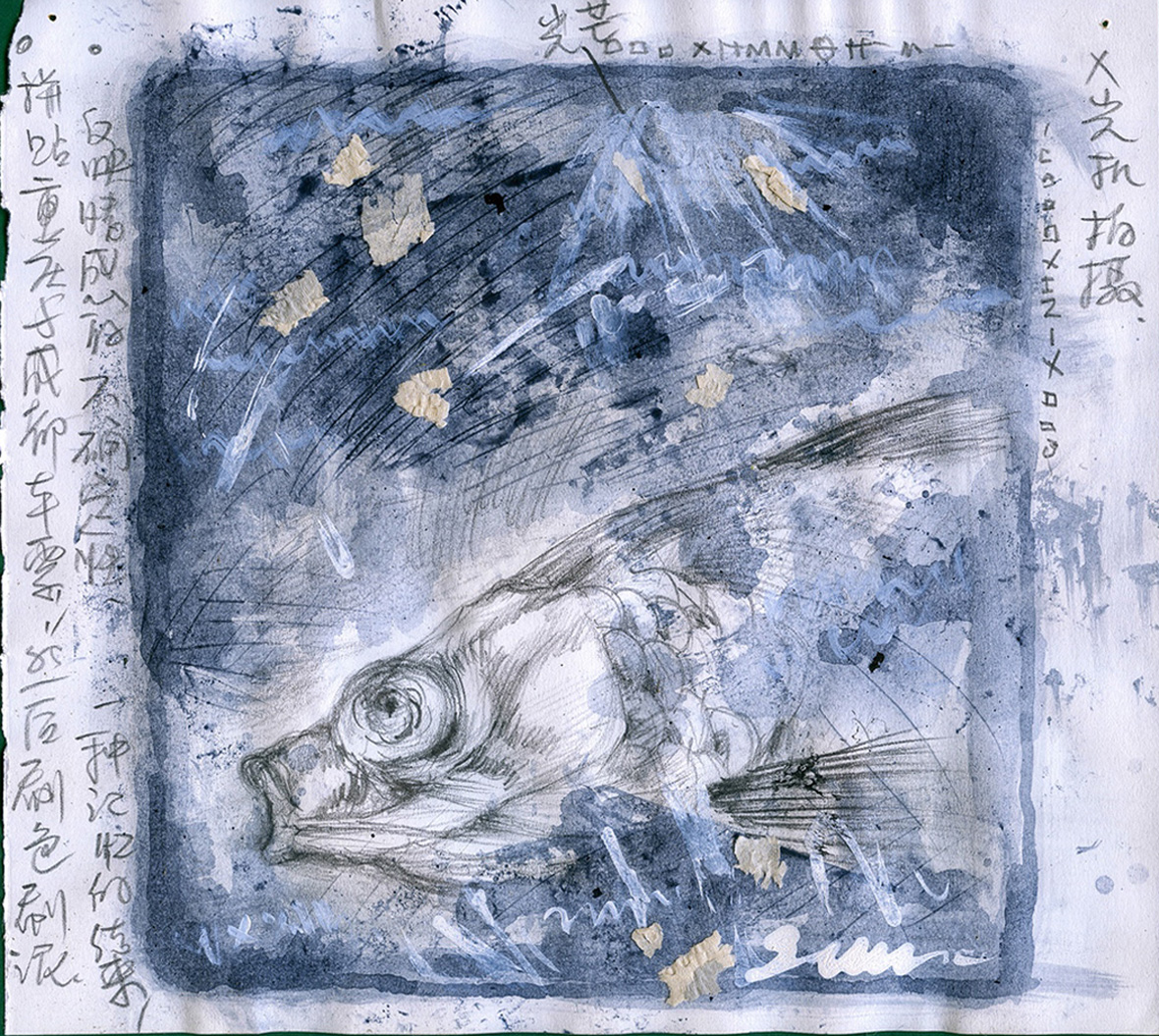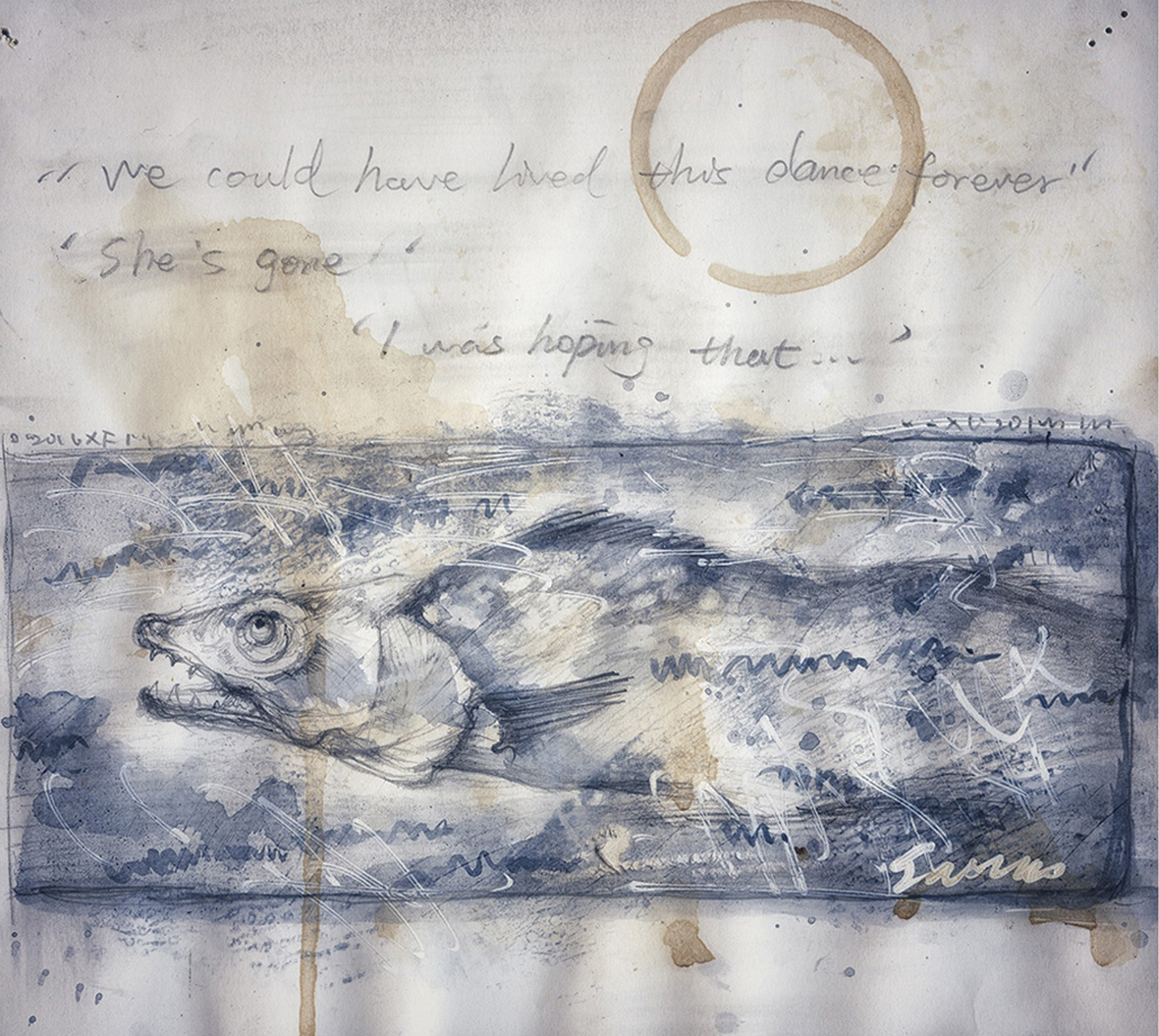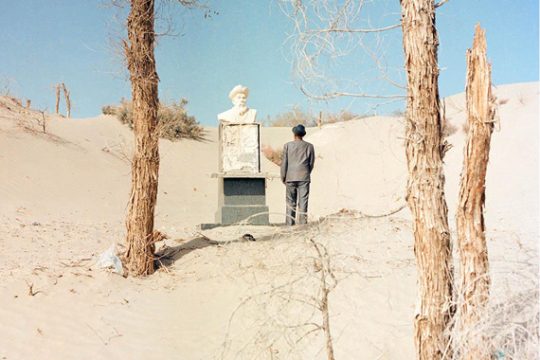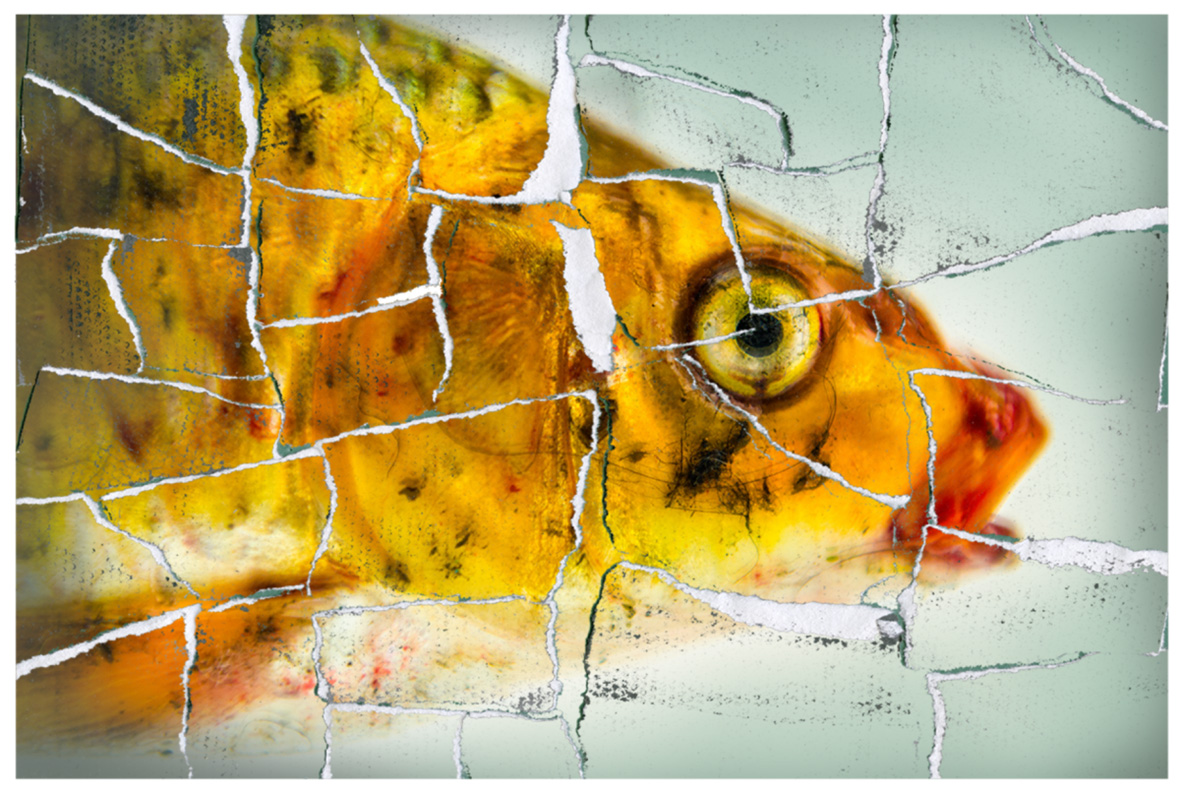
According to a study by Microsoft, the average adult human now only has an attention span of eight seconds, a sharp decrease from 12 seconds in the year 2000. It’s not a stretch to predict that, as technology continues to advance, our attention will become even more divided as we swipe from one feed to the next in search of “something new.” Within this global stream of information overload, Chongqing-based artist Sun Keqin swims against the current to ask: “If you had only seven seconds of memory like a fish, would it be a blessing or a curse?”
微软的一项研究表明,如今成年人的平均注意力时长只有 8 秒,与 2000 年的 12 秒相比明显下降。可以预见,在科技的持续发展之下,人们的浏览时间也更碎片化,倾向用手指唰唰地划过一条条内容去获取信息。面对全球信息过载的现况,重庆艺术家孙可卿选择反其道而行:“如果你只有七秒记忆,这是天赋还是诅咒?”
Although this open-ended question seems universal in nature, Sun’s ongoing multimedia project Seven Seconds of Memory, began as all great art does—from personal experience. “The works in this exhibition begin with my own memories,” Sun Keqin states, “and records my sorrow and joy, as well as my concern and thinking about the emotional memory between people now.”
Through a combination of photography, painting, and even X-Ray scans, Sun creates a memory book of madness, filled with torn pages, scribbled notes, and loads of dead fish. “My studio smelled for weeks!” Sun recounts.
虽然这个开放式问题看上去很普遍,但是和很多出色的艺术作品一样,Sun 正在创作的多媒体项目《七秒记忆》(Seven Seconds of Memory) 同样源自于自己的个人经历。“这次展览的作品正是从我的记忆中出发,记录着我的悲欢离合,以及对当下人与人之间情感记忆的关注与思考。”通过一系列的摄影作品、绘画以及 X 射线扫描图,孙可卿以拼贴画的形式,组成一本狂乱的记忆之书,其中充斥着撕裂的页面、手写字条、旧照片以及死鱼图像。回忆起当初创作时的情形,孙可卿说:“我的工作室臭了好几天!”
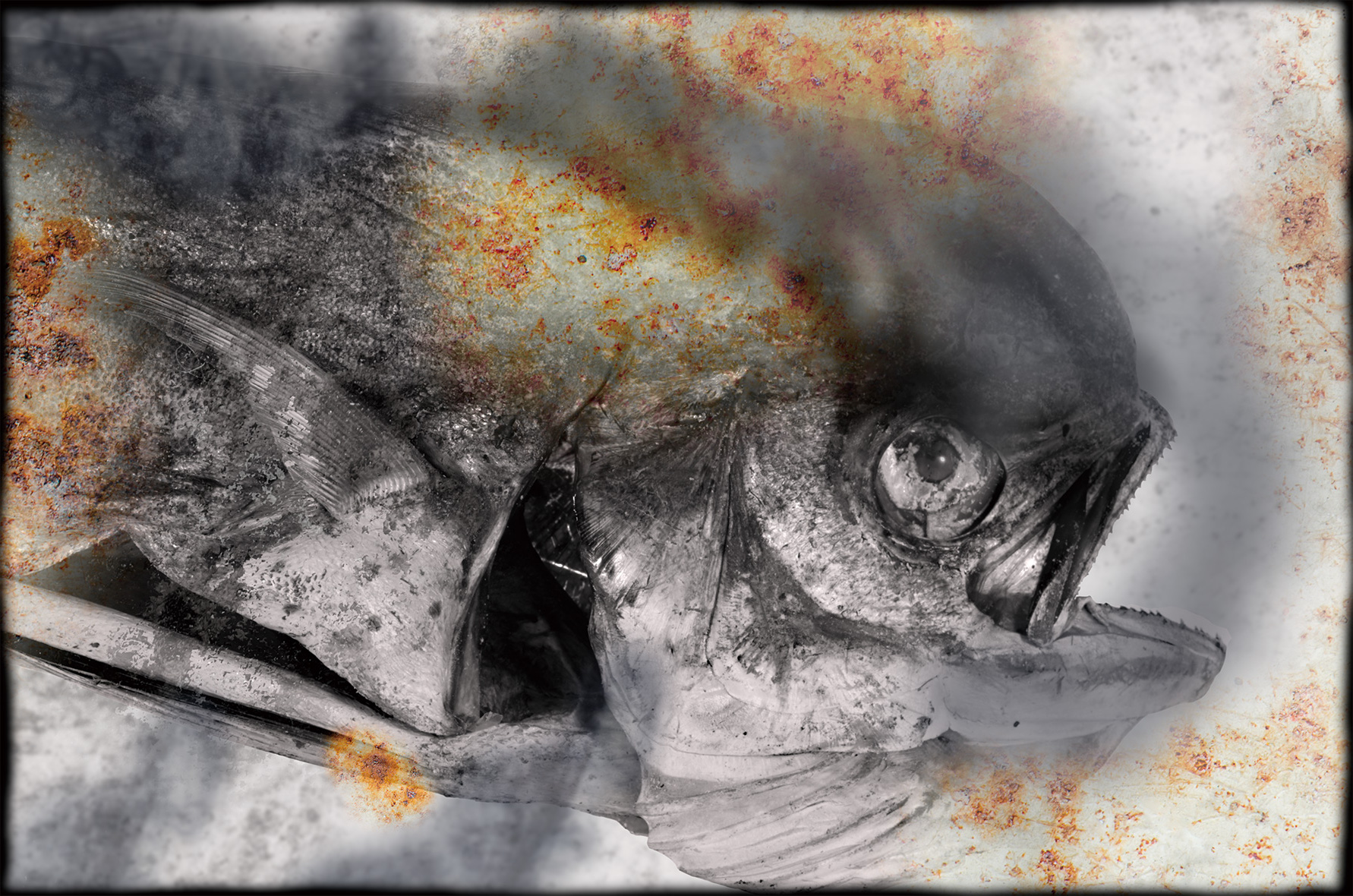
But within the chaos of his work, there’s a clarity that can only occur when viewing one’s past from a present perspective, one that allows life’s many mismatched melodies, motifs, and confusing coincidences to be properly placed within a harmonious arrangement.
Sun’s painstaking devotion to the older, traditional methods of analog film pays homage to photography’s early days. “In the past, curtains were placed behind the individual who was getting their photo taken,” Sun notes. “I did the same for my fish shoots, mainly to emphasize the feeling of a memory.” Similarly, the scratches and graininess of the pictures represent the tearing and fragmentation of memory, while the rust and computer glitches reveal the deterioration of our objective recollection over time.
作品的混乱画面之下,隐藏着一种从当下回顾往昔的清晰视野,这种清晰感将生活中许多错位的旋律、主题和困惑重新归位,形成和谐的排列。
孙可卿对传统老式胶片摄影的执着,意在致敬早期的摄影历史。“我们知道上一代人拍集体照,会在背后放置一个幕布。”孙可卿说道, “我在拍摄鱼的时候也放了一个幕布,主要是强调一种回忆的感觉。”同样,图片中的划痕和颗粒感象征着记忆的撕裂和碎片化,而锈蚀痕迹和电脑成像瑕疵则寓意:随着时间的流逝,记忆的客观性也随之下降。
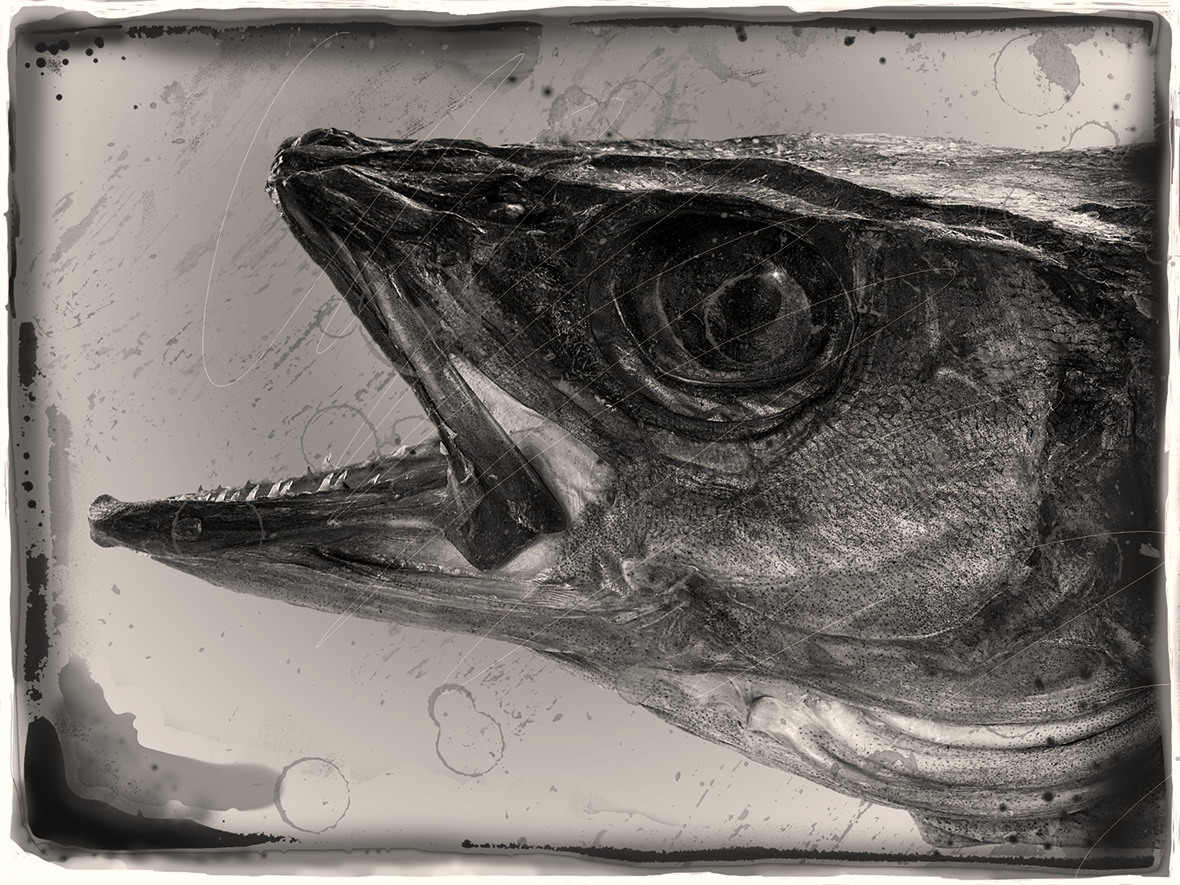
Born the son of a painter, Sun always knew he wanted to be an artist and that there were high expectations for him. However, now in his forties, it certainly took him a long time to get there, and despite his youthful appearance and optimistic demeanor, his past is full of heartbreak and failure.
In fact, he almost never made it at all. “I was rejected from the high school run by the Sichuan Fine Arts Institute, twice” Sun laughs, “which made my father very disappointed, maybe he thought I was not so talented.” After getting in and graduating, Sun faced another crippling setback: he was denied entry to the Sichuan Academy of Fine Arts… four times.
However, Sun was determined, and for five long years, he patiently endured mounting pressure to give up his dreams as he continuously honed his skills without the support of his family. “Before I passed the exam, my relationship with my father was very tense, and the relationship between my father and my mother was also very tense. They were going to divorce” Sun says. “My father totally abandoned me; he thought I was never going to be an artist, and that I would also fail my whole life.”
孙可卿的父母都是画家,耳濡目染下,成为画家也是他从小的梦想。他也知道所有人都对他寄予厚望。然而如今已经四十多岁的他,耗时许久才达到了这些期望。尽管看似年轻,举手投足间也乐观十足,但这一路走来他并不是没有坎坷。
实际上,可以说他几乎“从未成功”过。“后来我考(川美)附中,当时考了两年都没考上,父亲对我很失望。”终于进了学校又毕业后,孙可卿又面临着另一次残酷的挫折:他连续四次被四川美术学院拒之门外……
但孙可卿始终坚持不懈,长达五年的时间里,在没有家人支持的情况下,他耐心地磨练自己的技术,默默承受各种压力,未曾放弃过他的梦想。“在我没考上川美之前,我和我父亲的关系是很紧张的,父母当时也正准备离婚。我父亲那时候认为我已经废了,是个没有任何出息的小孩儿。”
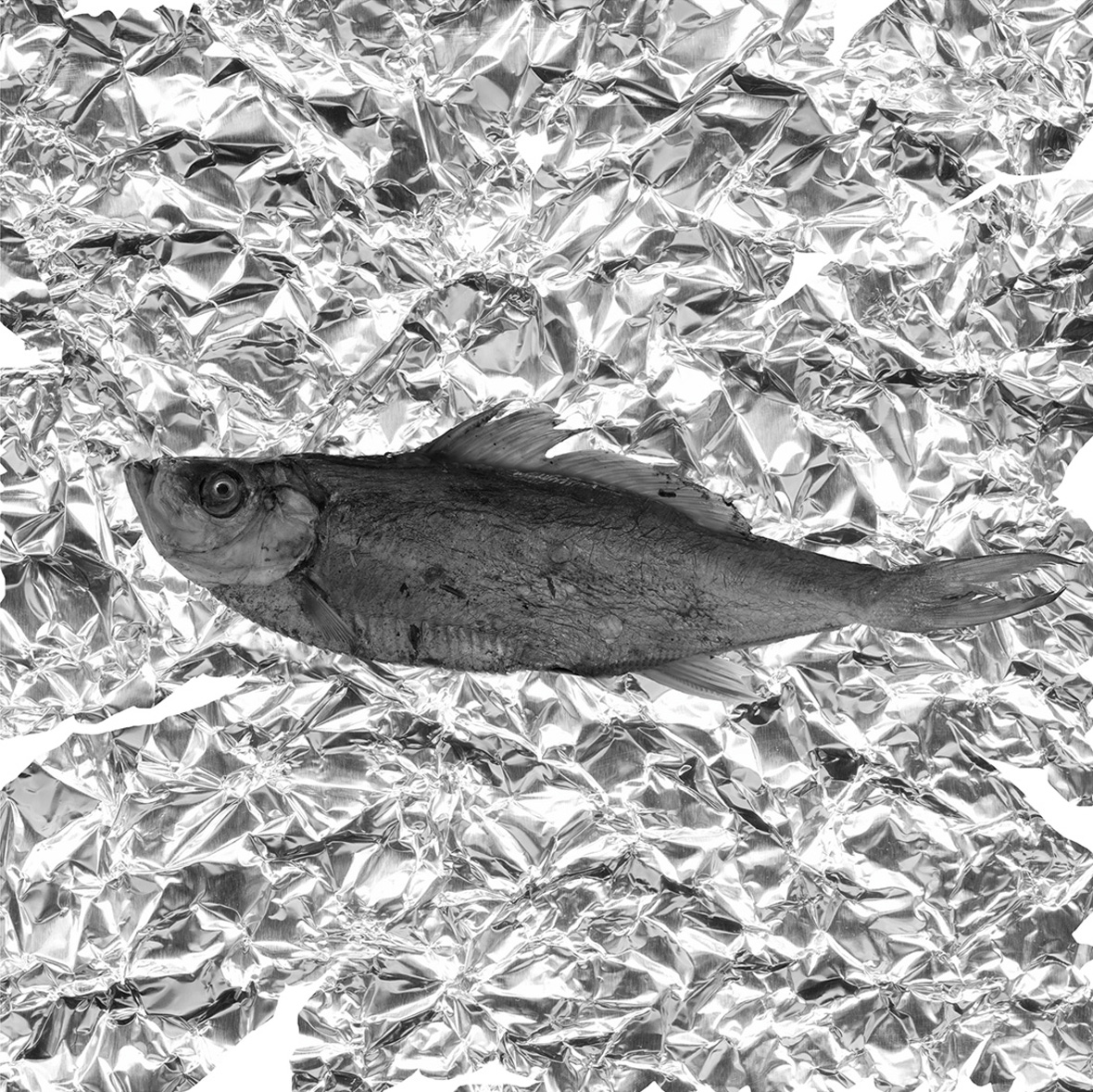
When asked if he ever became discouraged, Sun humbly replies, “Never, I’m very patient and good at waiting.” Now, as a professor of photography at his alma mater, Sun tries to impart this same attitude on his students. “I always tell my students that it takes a really short time to press the button, but a long time waiting for the right moment to show up. If you look back, for normal people five years may seem like a really long time, but if you really believe in something, especially your art, patience is a very important lesson you have to learn.”
With exhibitions across China, the US, Germany, and Australia, Sun ’s patience has finally paid off, but tragically, too late for his father to witness. “The year I gained entry to university was the year my father found out that he had lymphatic cancer,” he recalls. “Although I thought my paintings were very bad at the time, my father still put it on the wall of his ward, and said proudly, “Look! It is my son’s painting! He is a student of the Sichuan Fine Art Institute now!” The day after his final examination, Sun’s father passed away.
当被问到是否曾经灰心过时,孙可卿谦虚地回答:“从来没有,我很有耐心,也善于等待。”现在,成为母校摄影教授的他也试图将这种的心态传授给他的学生。“我总是告诉我的学生们,按下这个相机快门只需要很短几秒,但是要等待合适的时机才会出现。如果你回顾过往,对于一般人来说,五年可能看起来很长,但我相信,如果你真的相信某件事,尤其是艺术,耐心是非常重要的,你必须学习它。”
如今孙可卿的耐心终于得到了回报,陆续在中国、美国、德国和澳大利亚举办过展览,但遗憾的是,他的父亲未能见证这一切。
“我考上了美术学院那年,我爸确诊了淋巴癌。”孙可卿说道,“那时候我的画儿画得很差,他把作业挂在病房里给医生、护士看,还说‘看这是我儿子画的,他是美院的学生噢。’” 期末考试后的次日,孙可卿的父亲去世了。
This forced forgetfulness of pain can be a bittersweet companion in our lives, occasionally rising from the depths of our memories. Although they may disappear altogether over time, they still take their toll. Sun makes sure to pay particularly close attention to this relationship in his work. “When we want to forget a person, we may tear up his photos. My creation is based on this habitual thinking model of people, which causes viewers to re-select and examine the evasive content in their inner memory, rewriting them.”
Sun also asks, in an era where everything in our lives is recorded, wrapped, commodified, edited, and then dangled like fish food on social media for others to consume, what value do our private memories hold? Do our fragmented recollections of the past, torn from the personal pages of our history and stitched into our subconscious, actually inform who we are? Or is the present construction of us, who we choose to show the world, really all that matters?
去刻意遗忘生活中的痛苦,可能是一种苦乐参半的存在,因为它依然偶尔会从我们的记忆深处浮现。即使终有一天,它们可能会完全消失,但也难免有失落。孙可卿努力在创作中关注这种关系。“当我们想忘记一个人的时候,我们可能会撕掉他的照片。我的创作正是基于这种习惯性的人的思维模式,让观者重新选择和审视内心记忆中的回避性内容,再改写它们。”
孙可卿还发出诘问:当下人们生活中的一切都被记录、包装、修饰和编辑过,然后像鱼粮一样悬挂在社交媒体上供他人消费,在这样的时代,我们的私人记忆还有什么价值?我们过去的零碎记忆,撕自于我们过往的经历,又缝合到自己的潜意识中,这样的记忆真的能说明我们是谁吗?又或者,我们目前在网络世界选择展示的自己真的重要吗?
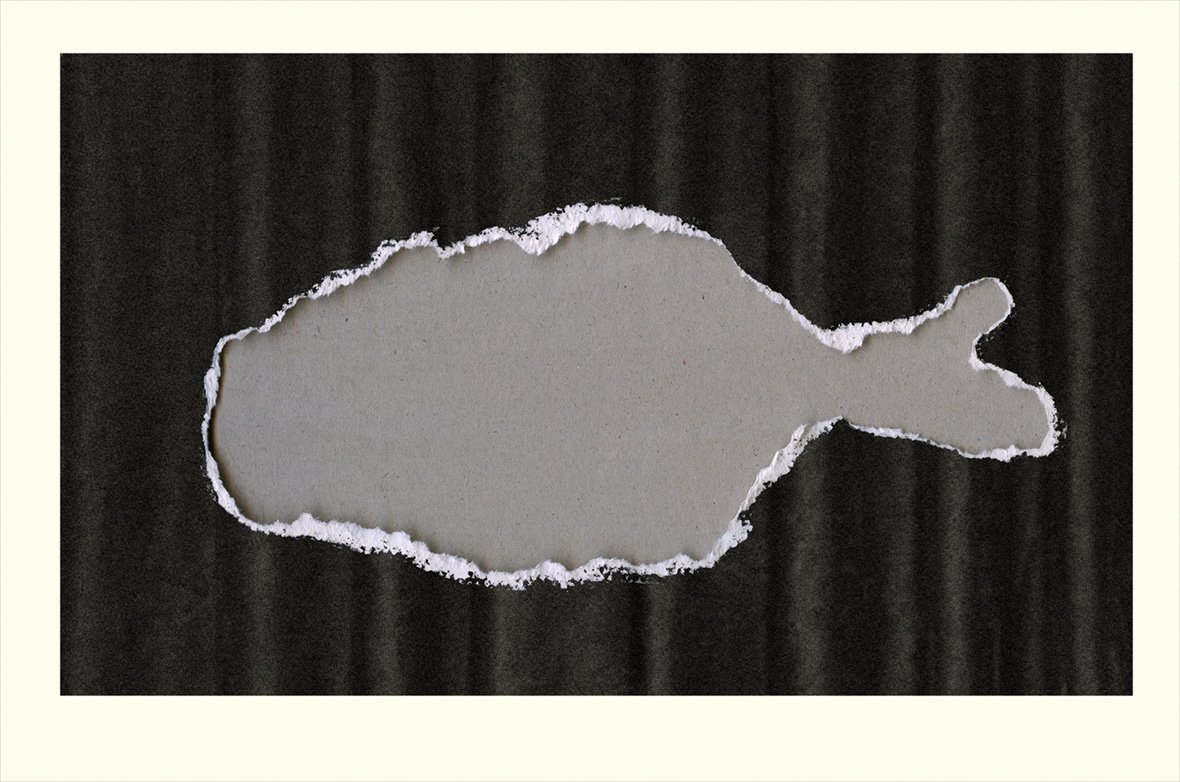
When asked if Sun would prefer to have the attention span of a fish, he responds: “In reality, I am actually willing to become a fish with only seven seconds of memory, because then I can forget some painful things. But the natural condition of human memory has to let us not forget. Therefore, I think I can choose to remember those memories with a temperature, and I think that the temperature of this memory is constantly pushing me to move forward. I feel that at the end of my life, when I think back to all the joy, pain, or sorrow of my life, I can prove that I am a complete person because I think that memory is an important part of what makes us human.”
当被问到自己是否愿意拥有鱼的记忆时,孙可卿回答说:“在当下的现实社会中,其实我也愿意做一条只有七秒记忆的鱼,因为我可以忘掉一些痛苦的事。但人的记忆天生就让我们不能忘却,我觉得我可以选择去记住那些带有余温的记忆,我觉得这种记忆的余温在不断推动着我继续向前走。在我生命终结的那天,当我回想起一生中的欢乐、痛苦或哀愁,这些反而更能证明我是一个完整的人,因为我觉得记忆是人类之所以成为人类很重要的一个特征。”
Like our stories? Follow us on Facebook and Instagram.
Contributors: Rorí Mencin
Chinese Translation: Olivia Li

